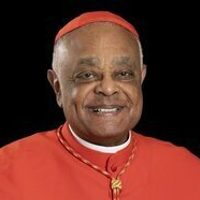We have all lived through many changes in our lifetime, but the world of Covid has rapidly introduced many more changes than we might have ever experienced before. In the past, we may have seen our favorite toothpaste simply disappear from the public market. We once had come to expect to welcome those new car models at the same time each year. Sadly, we have had to face the frustration of the forever loss of a favorite childhood candy. And the once-fashionable advertisements for cigarettes fortunately have fallen victim to medical warnings about their danger. In the past, things changed more slowly. In the wake of Covid, the pace and the amount of changes has quickened.
Church life itself also has encountered many once unimaginable alterations. While televised church services were often broadcast in the past usually only on Sunday mornings, now social media makes available multiple options of Masses, novenas and rosary recitations at almost any hour of the day or night. Earlier broadcast religious services were once made available primarily for the homebound or physically limited. Now they serve as replacements for those who might simply find them convenient.
Broadcast religious services are not now nor have they ever been the same as gathering as a living community at prayer. Even the best of them fail to capture our Catholic experience of physical sacramental engagement – no matter how convenient or technologically attractive as they may seem. They still serve a purpose for those who may be confined to home or with physically debilitating limitations.
However, they are not the sacramental expression of Catholic faith, because they lack the experience of being an assembled community at prayer. From the earliest days when the Church had to gather in secret in catacombs, worship was never intended to be celebrated in isolation.
Covid has left us with a great conundrum, how do we effectively re-engage our people for worship? The convenience of our personal devices has only added to this challenge, since they make it so convenient to accomplish many important tasks in isolation and all alone. People can and certainly do pray quietly and privately. However, worship is a communal activity.
Our recent exhilarating experience of the Olympics demonstrated how the sheer energy of being together in such activities, even as spectators in attendance, can be an invigorating event for the athletes as well as those in attendance.
Some activities cry out for active participation – something that the Second Vatican Council’s Constitution on the Liturgy ardently encouraged, noting, “In the restoration and promotion of the sacred liturgy, this full and active participation by all the people is the aim to be considered before all else; for it is the primary and indispensable source from which the faithful are to derive the true Christian spirit; and therefore pastors of souls must zealously strive to achieve it, by means of the necessary instruction, in all their pastoral work.” [Sacrosanctum Concilium #14.]
(Cardinal Wilton Gregory, the archbishop of Washington, writes his “What I Have Seen and Heard” column for the Catholic Standard and Spanish-language El Pregonero newspapers and websites of The Roman Catholic Archdiocese of Washington.)









